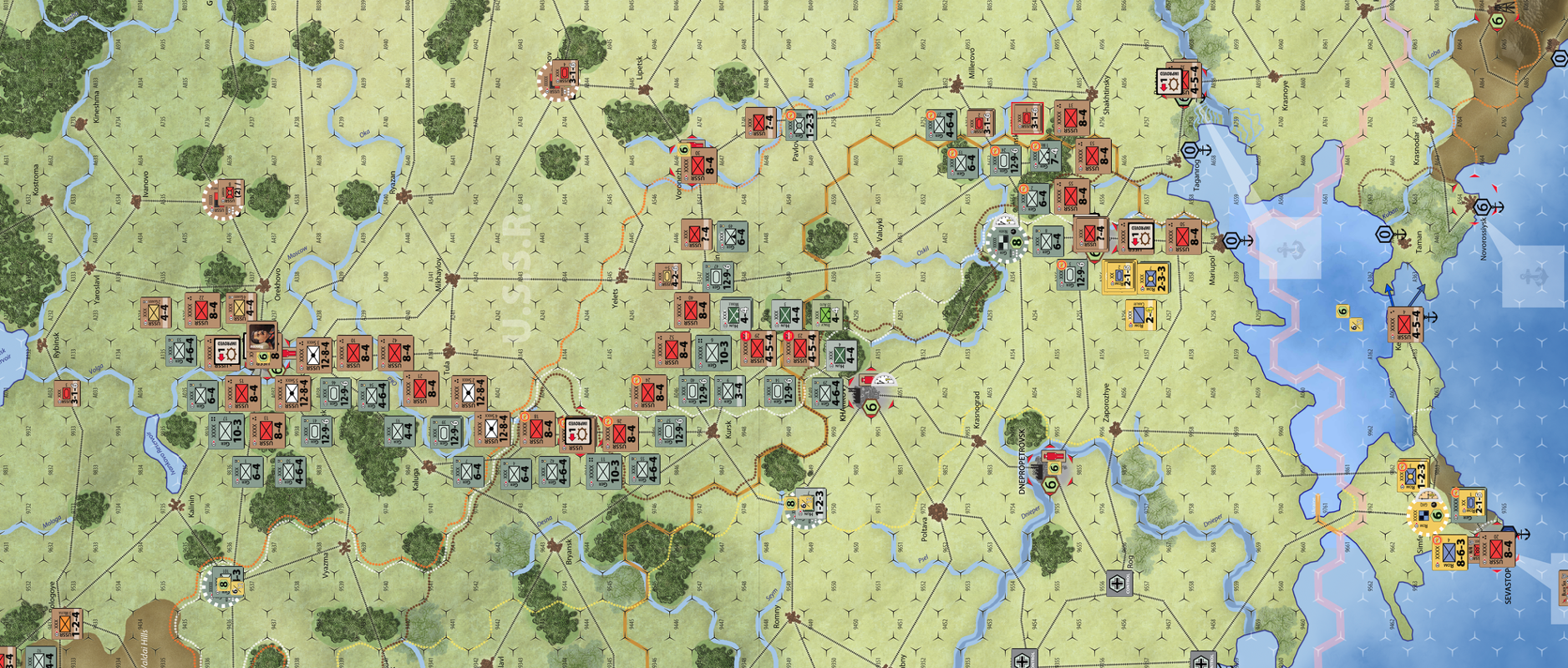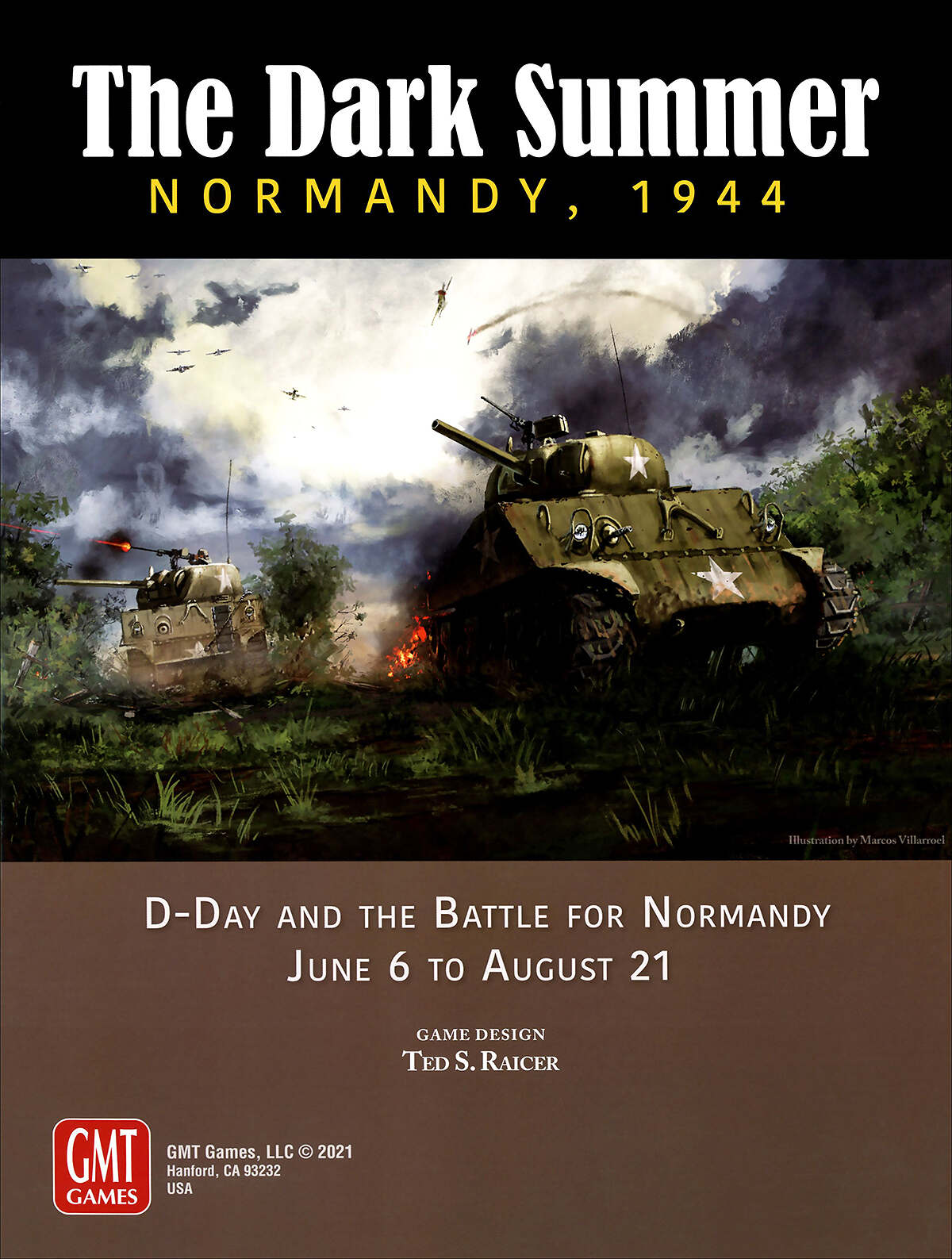In the shadow of Napoleon
In the shadow of Napoleon
November and the mud come to calm the German fervour. Little movement and fighting. The Wermacht slowly absorbs the pocket in which four armies are struggling. The Russian desperately tries to get out but the German curtain is too strong.
In Crimea, the Romanian HQ takes advantage of a nice winter season and the absence of enemy to prepare the siege of Sevastopol. This one promises to be difficult, it will surely be necessary to wait until 1942 to seize the strategic port on the Black Sea.
The only Soviet offensive action is in the no-man's land between Kalinin and the Valdaï Mountains. A few corps timidly venture there to try to threaten the GQ North which is supplying the attack on Moscow. This offensive is slow, the weather and the absence of air support preventing any proper gain.
The end of November see an unexpected thaw. The sun shines again on the north of the USSR. It won't be back for another three months, so the german is going to make the most of it.
Immediately, the return of mobility allows the Red Army to be cut off between Orel and Voronezh. Another pocket threatens to form there. The Luftwaffe gains the upper hand againt the VVS once again. New aircraft now equip the Russians, a stuka is shot down. But on the whole, the sky remains German.
According to the plan, the southern HQ is trying to take Stalino. It asks for everything that flies and activates the Romanians. Air support prove decisive and the town fall. A panzercorp rush in.
But Stalin doesn't admit defeat and order a counter-attack on the town. The Soviets then engage their new ground support planes and against all expectations manage to obtain it. The German soldiers are stunned to be struck from the air. It is the first time since June 41!
The surprise is such that the town returns to Russian hands. Difficult failure for the GA Sud who has planned to winter there.
In the occupied part of the USSR, the partisans prove to be an occasional nuisance. Partisan markers are drawn at random and give random results ranging from nothing at all to half a loss of personnel. It is also possible for them to cut off a unit's supply or prevent a unit from moving. I understand that this will have to be dealt with.
---------------------------------------------------------------------------------------------------------------------------------
December and its first flakes arrive in their turn. The snow prevents air support but still allows some mobility. Given the gaping holes in the Soviet front, this suits the Axis perfectly. The rest of the Kursk pocket is eliminated and the Orel pocket is set up. The Soviet player must really pay attention to the tempo of his retreat. The lack of mobility of his line forbids him any movement of amplitude. You have to be ready for the great leap backwards when the possibility of encirclement arises.
The Wermacht moves up behind the Russian troops and advances towards Voronezh. Around Stalino, the line is extended to take the Russians from the rear.
The Soviet attacks are few. A panzer corps around Orel agrees to retreat to avoid taking casualties. Elsewhere, the frontoviks cower in fear. If winter doesn't come to the rescue of the Stavka, disaster is on the way.
That's when Russia reveals its true face. The blizzard sets in and freezes the whole country. The effects on combat and movement are no different from snow. On the other hand, at the beginning of each Soviet turn, the German suffers automatic losses if he is in contact with the Russian. And it stings very much. In the first blizzard round, not knowing the rule, I stayed a bit too much in contact. The result: eleven step losses to suffer. That is more than all the losses inflicted by the Red Army during two months.
The rule is very well found. Rather than adding supernumerary troops in the winter or giving a combat bonus to the Russians that could be useless if they were in too bad a position, we make the frontovik stinging. The German MUST retreat.
It is with a heavy heart, when the Orel pocket has just closed on six Soviet armies, that OKH give the order to retreat. The Wermacht tries to hang on to the encircled troops, but the Russians counterattack. Emboldened by the bad weather, they pierce the pocket and free the encircled. Then they come into contact with the Germans.
The ground conquered at such a high cost is freed feet by feet. Cleverly, the Russian comes to attack the points where retreat is not an option: the HQs. Bringing them back would be a loss of three weeks for the Germans. The OKH, in the euphoria of late November, repositioned the central HQ at Millerovo. The position is going to be difficult to hold!
At the end of the year, the terrible Russian winter has done its work. A Tula- Voronezh front is being formed while Moscow is saved for the time being. Despite the heavy losses suffered since the beginning of the campaign, the Red Army is still present. The weight of the war is nevertheless being felt: the immense Russian human reserve is drying up. During the summer of 1941, the Russian could spend up to 8 reinforcement points per turn. At this point, he has reached 5 points and is starting to save.
For his part, the German has reached the end of his reserves: he still had 8 points of personnel and 5 points of equipment.
The blitzkrieg is over and a long attrition conflict is beginning.






Commentaires
Enregistrer un commentaire